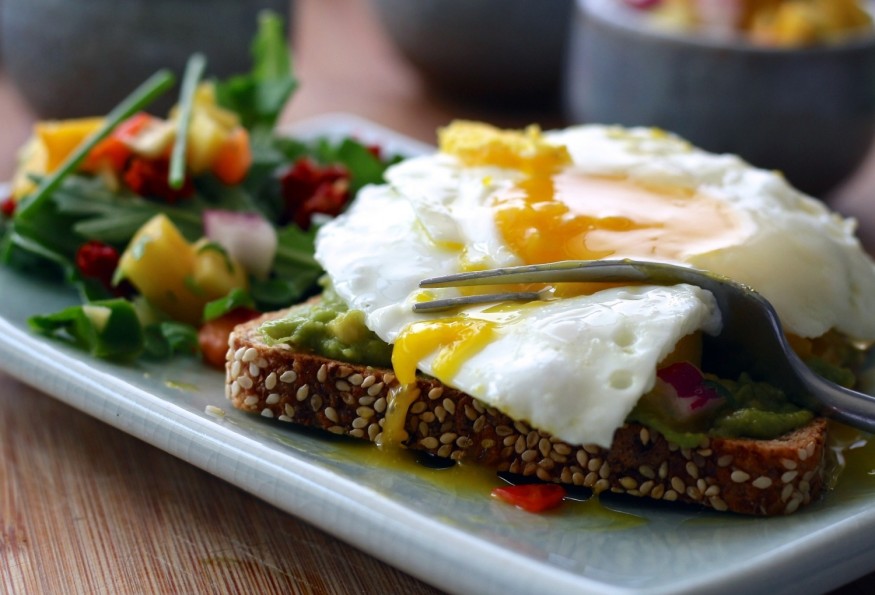
A high-protein diet has the potential to enhance muscle growth and help with weight loss. Whether you hope to lower your blood pressure, hike your metabolism, or improve your bone mass, protein is critical for maintaining good health.
Unfortunately, many adults do not consume enough protein for optimal health and fitness. The good news is that you don't need to drink raw eggs or do anything drastic to increase your protein intake. Here are six easy ways to sneak more protein into your diet and experience its health-boosting benefits.
1. Choose Plant-Based Sources of Protein
Contrary to popular belief, animal-based foods are not the only good sources of protein. Many plant products contain impressive amounts of protein that can increase muscle strength and overall health. Plant-based protein is found in a wide variety of plants, including legumes, nuts, beans, and vegetables. Soy milk, tofu, and other plant-based products that mimic dairy and meat are also valued for their protein content.
One of the most popular commercial plant-based protein products is pea protein. It is highly nutritious and contains all of the essential amino acids the human body needs. Whether you chow down on a veggie burger or nibble on an energy bar, pea protein-based foodstuffs are a great protein source.
2. Replace Breakfast Cereal With Eggs
Light and crispy breakfast cereal is a favorite early-morning food for many people. Although it can provide a short-lived burst of energy, many breakfast cereals are low in protein and nutrients in general. Since breakfast is arguably the most important meal of the day, trade your favorite calorie-dense, nutrient-poor cereal for eggs.
Eggs are a great choice for breakfast because they are a good source of high-quality protein. They also contain choline and selenium, which are two important metabolism-revving ingredients. Eating three large eggs in the morning can provide you with about 220 calories and 19 grams of protein. Eggs can also reduce your appetite and keep you satiated for several hours, which makes them a good weight-loss aid.
3. Swap Regular Yogurt With Greek Yogurt
Most flavored yogurts are packed full of sugar, which gives them their dessert-like flavor. Many people eat yogurt to raise their probiotic intake. But the excessive sugar content may negate many of the health benefits provided by the probiotics. Instead of indulging in sugary yogurts, substitute plain Greek yogurt.
Plain Greek yogurt is not only healthier in general than its sweetened counterparts, but it also contains more protein. A single serving of Greek yogurt contains between 17 and 20 grams of this vital nutrient. This is approximately twice the amount found in a single serving of traditional yogurt. If you dislike the flavor of plain Greek yogurt, sweeten it with blueberries, pineapple cubes, or other types of fruit.
4. Keep High-Protein Snack Bars at the Ready
Getting adequate protein in your diet becomes tricky on busy days when you don't have time to meal prep. To boost protein consumption even when you don't have time to cook all your meals, keep snack bars with you. High-protein snack bars are convenient because they don't usually need to be refrigerated. They're small enough to tuck into your purse or pocket, so they're available whenever you need them.
You can purchase commercially made protein bars or bake homemade bars in large batches as you prefer. If you opt for the commercial type, double-check the label to see how much sugar is added. Some protein bars contain so much sugar that they're more like candy bars than a healthy snack!
5. Eat More Whole Grains
It's common for people who are trying to lose weight to shy away from grains. While it's a good idea to limit your consumption of processed carbohydrates, whole grains are an important source of nutrients. These include fiber, antioxidants, vitamins, minerals, and - you guessed it - protein.
Different grains contain varying amounts of this essential macronutrient. Quinoa is a great choice for increasing protein intake because it contains 8 grams in a 1-cup cooked serving. Other good whole-grain protein sources include wild rice, buckwheat, millet, and couscous. The main thing is to choose whole grains rather than refined ones. Refined grains like white rice contain much less protein per serving than their whole-grain counterparts.
6. Sprinkle Seeds on Your Food
Seeds like chia, hemp, and flaxseed are rich in protein and are easy to sprinkle on a variety of foods. If you're eating a salad, sprinkling just two tablespoons of seeds on it can add between 3.5 and 6 grams of protein. Other foods you may want to add seeds to for an instant protein boost include oatmeal, smoothies, and soups.
In addition to chia and flaxseed, some of the best seeds for increasing protein intake include hemp and pumpkin. Between meals, you can eat a small protein-packed handful anytime you're craving a nutritious and satiating snack. Just remember that many seeds are also high in fat, so enjoy them in moderation. Eating too many could pack on unwanted pounds.
Eating adequate protein is so important for your health and fitness goals. Fortunately, boosting daily protein consumption is easier than most people realize. If you struggle to eat enough protein every day, give the above tips a try. As you do, you'll likely notice positive changes in your weight, muscle development, and overall health.
© 2025 NatureWorldNews.com All rights reserved. Do not reproduce without permission.





